Magento 2 Backend Exploration: Magento 2 Export vs Improved Export
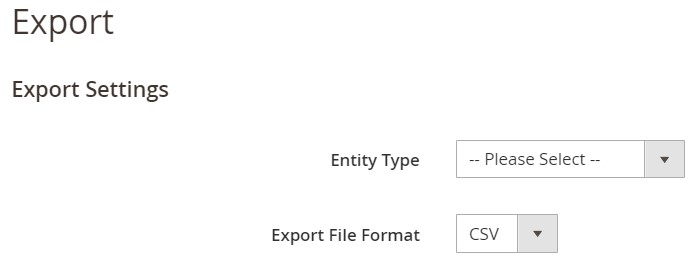
We’ve just described why the native Magento 2 import solution is not worth your attention. But what about the corresponding export tool? In the following article, we continue exploring the Magento 2 admin interface. This time, we compare the native Magento 2 export tool with the Improved Import & Export extension. You will find all the drawbacks of the native instrument highlighted below.

Table of contents
Magento 2 Export vs. Improved Export: Core Difference
You can find the default export solution under System->Export.
Entity Type
The Magento 2 export lets you transfer one of the following six entities:
- Advanced Pricing;
- Products;
- Customers and Addresses;
- CustomersMain File;
- Customer Addresses;
- Stock Sources.
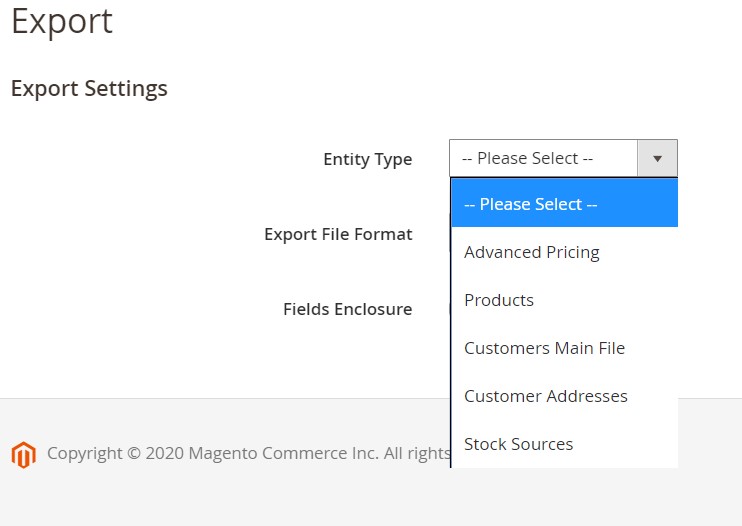
As for the Improved Import & Export plugin for Magento 2, it offers a much broader spectrum of entities. The module lets you transfer the following data from your e-commerce store:
- Advanced Pricing;
- Products;
- Customers and Addresses;
- Customers Main File;
- Customer Addresses;
- Stock Sources;
- Orders;
- Categories;
- CMS Page;
- CMS Blocks;
- Attributes;
- URL Rewrites;
- Search Synonyms;
- Search Terms;
- Widgets;
- Review;
- Catalog Rule;
- Stock Source Qty.
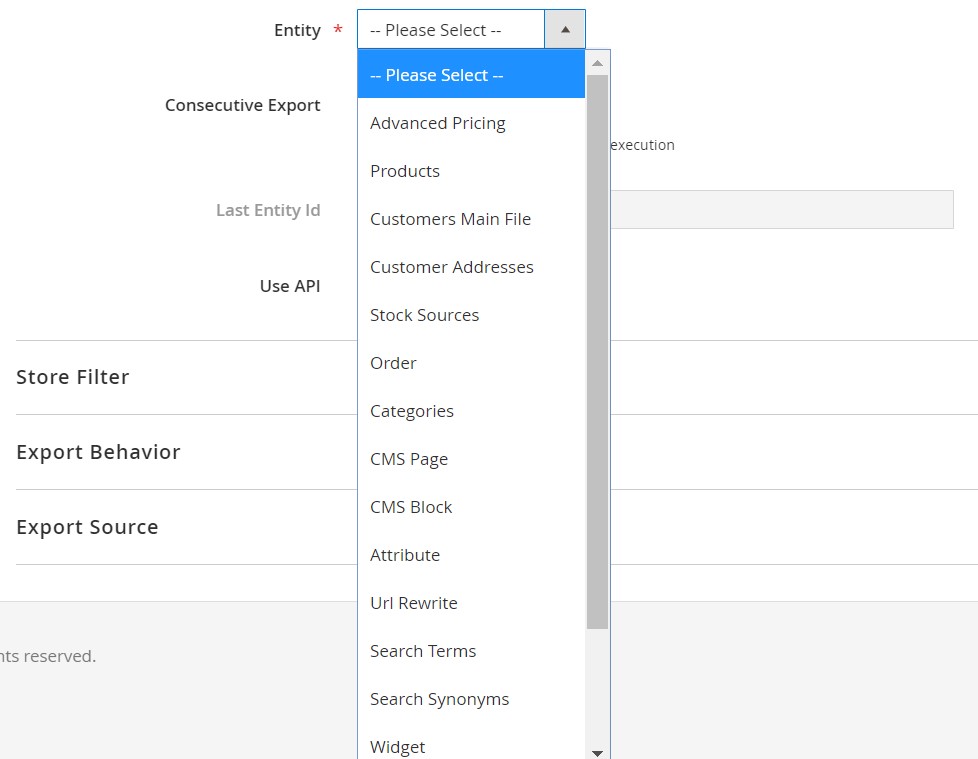
Export File Format
The default Magento 2 export tool works with only one format – CSV.

When it comes to our extension, you can leverage XML, ODS, and XMLX standards in addition to CSV.
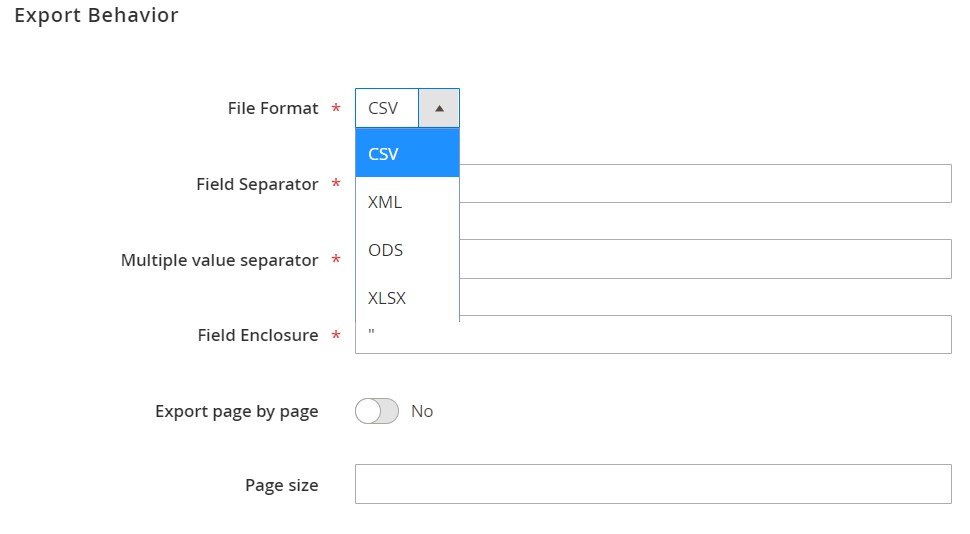
Field Enclosure
The default export tool lets you enable field enclosure.
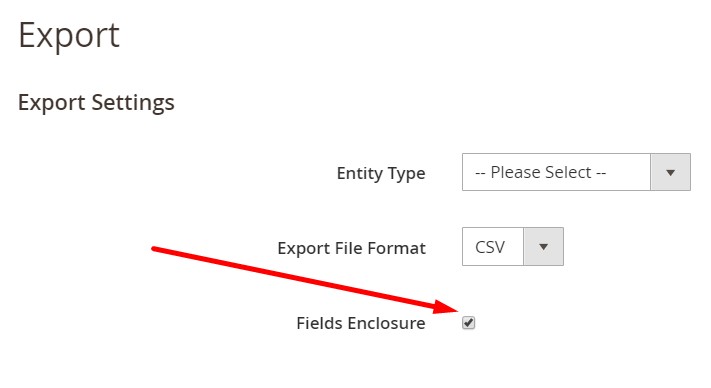
As for our module, it also lets you specify a character utilized for this purpose.

Besides, it is possible to set any custom separators you want. Improved Import & Export also lets you enable page by page data export as well as specify a particular page size.
Filters
When you select an entity, Magento 2 adds a grid with all the related attributes. Choose ones to exclude. This filter system is very inconvenient since you have to scroll down through all the associated attributes. Alternatively, it is possible to narrow down the selection due to search fields below a row with column titles.
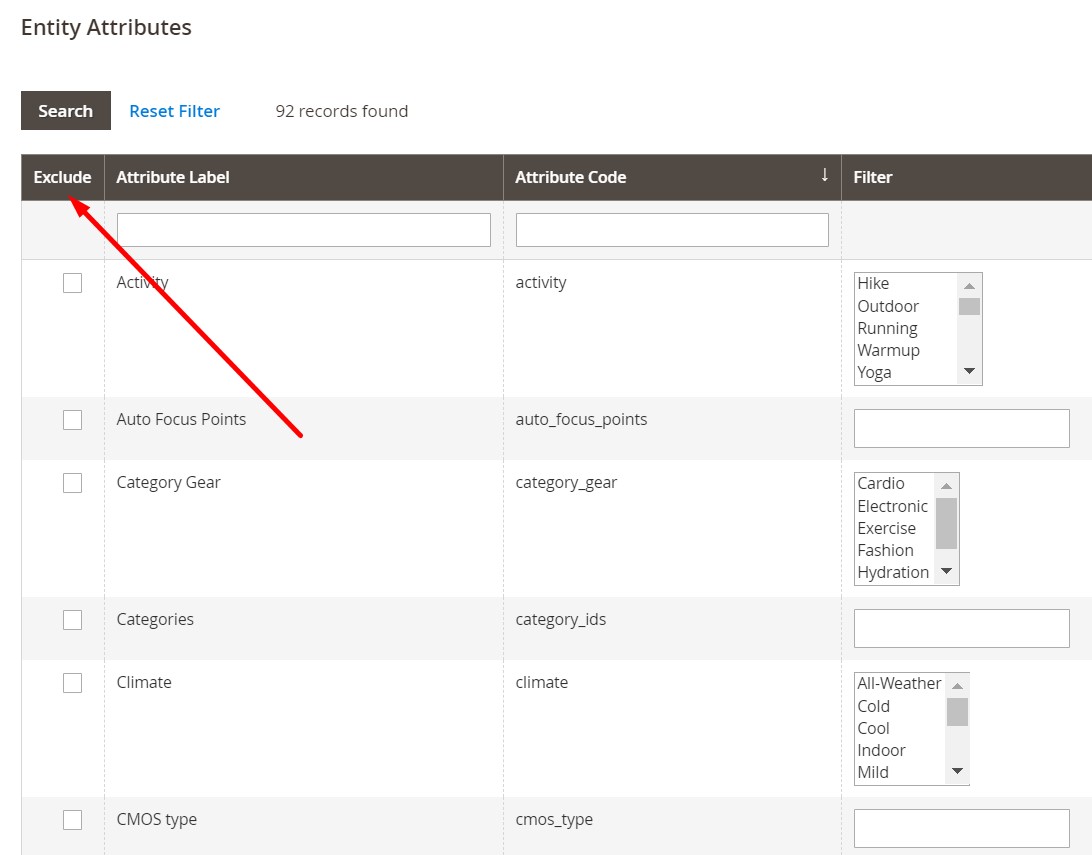
In the case of Improved Import & Export Magento 2 extension, we offer a slightly different approach. You select an entity and choose attributes and values to narrow down the selection of exported items.

Export Source
It is also necessary to mention that in the case of the default Magento 2 export tool, you can only download a data file. At the same time, Improved Import & Export also provides the ability to send it to a server via FTP/SFTP.
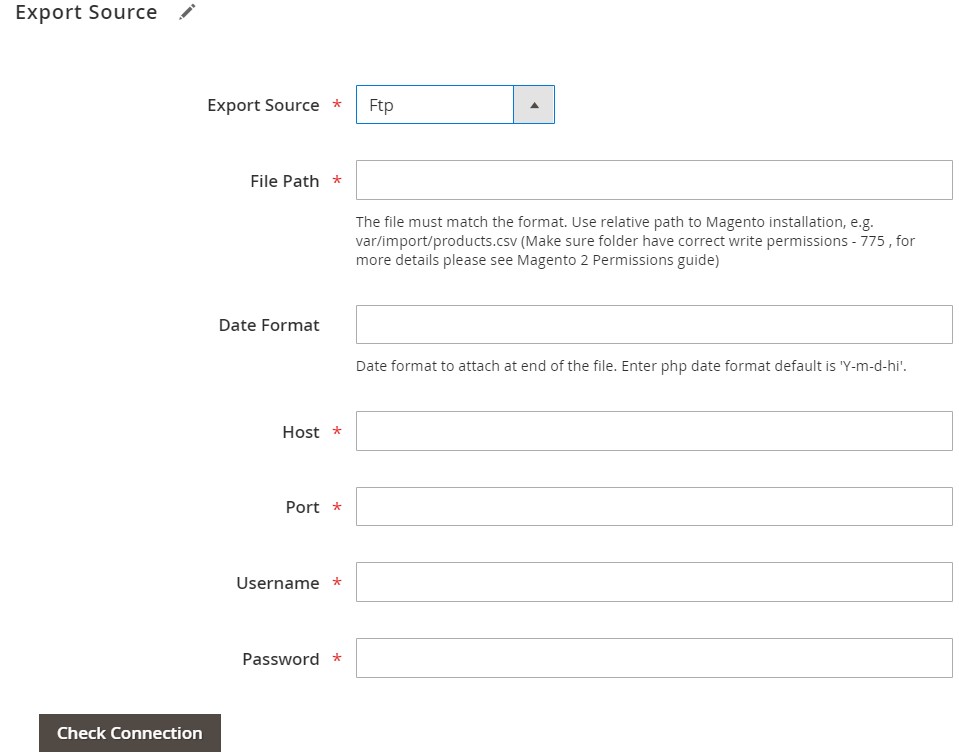
Store Filter
You can also export data for a particular store view only with the help of Improved Import & Export.
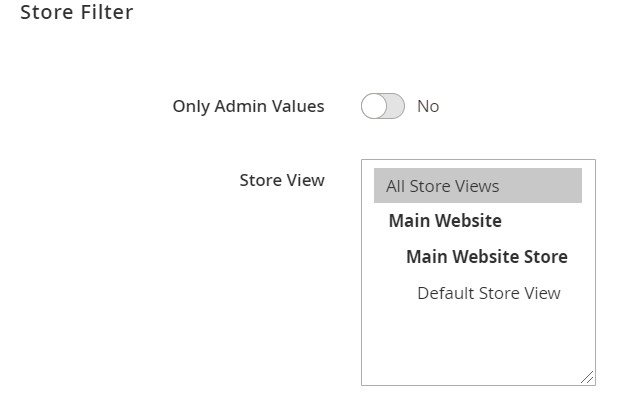
Save & Run
Unfortunately, you cannot save an export profile for further use with the default Magento 2 export tool. You have to repeat the same procedure every time you need to transfer data from your e-commerce website.
As for Improved Import & Export, the extension lets you not only save the created profile but also automate all further data transfers. We describe this feature in the section below.
Get Improved Import & Export Magento 2 Extension
Magento 2 Export vs. Improved Export: Other Features
We created the Improved Import & Export module to enhance our daily duties related to data import. Within the last few years, we’ve improved the extension a lot to make it suitable for a default data transfer routine. Now, the plugin dramatically enhanced import and export processes, providing several benefits that are not available with most similar tools, not to mention the default instruments. Improved Import & Export module is capable of moving all possible entities to and from your e-commerce website. Furthermore, the process can be entirely automated.
Automated Import & Export
You can automate export processes with the help of schedules. At the same time, trigger-based data transfers are planned as well.
Schedules
The Improved Import & Export Magento 2 extension utilizes the default cron syntax. It uses this technology to automate data transfer. As a store administrator, you need to specify an interval to create a scheduled. Next, the module will launch a job automatically. Our module also offers predefined ranges. At the same time, the available options include profiles with no schedule. And it is possible to launch scheduled profiles manually. You can configure the corresponding section of your export job as follows:

Events
Event-based triggers enable another way of data transfer automation. This time, updates are associated with real-time transfers. You only need to choose a trigger and link it to a specific event. The trigger will launch a data transfer right after the event occurs. Let’s imagine a situation when the Improved Import & Export extension exports customer data after a new customer registers on your e-commerce website. We describe this feature in more detail here: How to Run Magento 2 Import or Export After Specific System Event or Process.
Mapping Features
Another vital improvement that enhances the export features of our extension is represented by its advanced mapping functionality. The Improved Import & Export plugin comes in handy every time you transfer data from your e-commerce website to external systems. Due to different approaches to data storing, you cannot just take an exported file and move it to third-party platforms. However, our module offers several tricks that simplify the process.
Mapping Presets
The Improved Import & Export Magento 2 plugin offers a bunch of mapping presets. Feel free to use the predefined schemes to replace Magento 2 attributes with third-party ones automatically. It is only necessary to select a preset, and our module will do all the work for you.
The Improved Import & Export extension knows what third-party designations to use to replace the default attributes. The process looks as follows:

Matching Interface
In addition to presets, you can leverage a matching interface of the Improved Import & Export Magento 2 module. It lets you map attributes manually right in the Magento 2 admin. Our extension adds a corresponding section to every import and export profile. The procedure is reduced to a few steps: choose an entity, select a third-party attribute, and specify a replacement. Below, you can see a corresponding mapping section of an export profile:
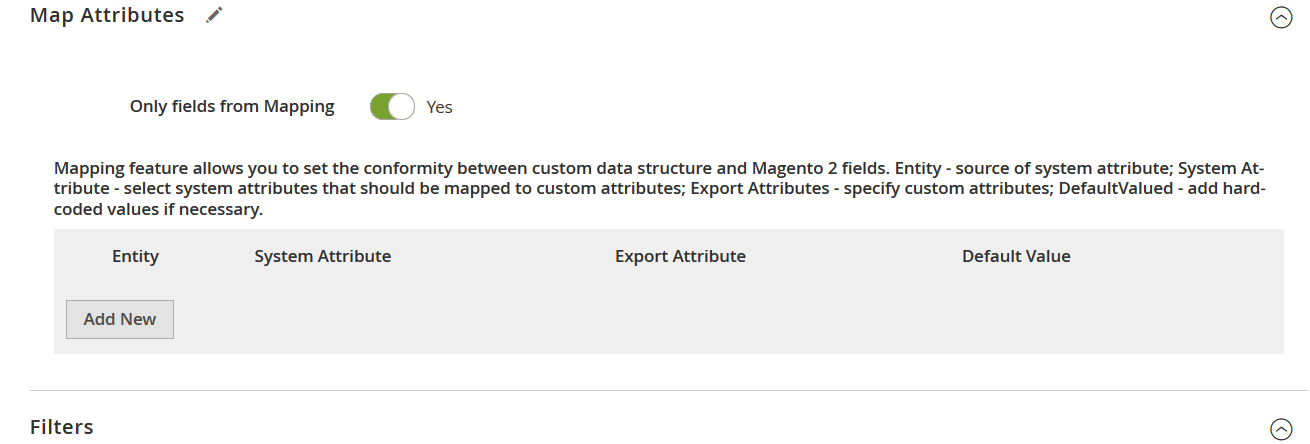
As you can see from the picture above, you can add hardcoded (default) values. Such values are added to all items of an exported file related to the chosen attribute.
Filters
Flexible filtering options represent another export feature of the Improved Import & Export Magento 2 module. Our extension offers the ability to narrow down the selection of exported data by eliminating all unnecessary attributes from an export file. The process is very straightforward. You select an entity and a system attribute. Next, specify filtering parameters, as shown below:

Attribute Values Mapping & Editing
Another mapping feature is related to attribute values. You can map and edit them right in your Magento 2 admin. The Improved Import & Export Magento 2 module offers an interface similar to the one we described above. Thus, you no longer need to edit attribute values in data files. Choose a third-party designation and specify a replacement. Attribute values mapping is described in this article: Attribute Values Mapping.
In addition to attribute values mapping, you can edit them in bulk. With the help of our extension, you can add a prefix/suffix to multiple attribute values. Another opportunity to simplify your daily duties is related to the ability to split or merge them. Feel free to combine the rules and apply them in bulk. You can read more about the feature here: How to Modify Attribute Values During Import and Export in Magento 2.
Extended Connectivity Options
You can connect your e-commerce store to any external systems, exporting and importing data using the extension’s connectivity options with the help of the Improved Import & Export module.
Multiple File Standards & Sources
As we’ve mentioned above, you can export only CSV files using the native Magento 2 export. However, the Improved Import & Export plugin eliminates this limitation. Due to support for XML, JSON, ODS, and Excel, it is no longer necessary to convert data files to and from CSV. As a result, you can freely export the required output and transfer these files to external systems. Also, note that our plugin knows how to unzip compressed data during import automatically.
Besides, our module works with numerous file sources. You can use FTP/SFTP, Dropbox, or direct URL uploads.
Alternative Ways of Import & Export
Since the default export tool is limited by file transfers only, it cannot cover all integration needs. As for the Improved Import & Export module, it exceeds the existing boundaries even more by introducing support for API connections and intermediary services.
With our extension, you can create direct REST API connections as well as leverage SOAP and GraphQL to transfer data between your e-commerce store and any external system.
Support for intermediary services includes Google Sheets, Office 365 Excel, and Zoho Sheet. However, you can use them for import purposes only. The process looks as follows:

The extension’s features are entirely suitable for all the provided connection types. Also, note that the module offers support for WSDL and WADL. You can see how the module works below:
Final Words
The limitations of the native Magento 2 export tool don’t let you use it to perform most daily duties related to data transfers. Luckily, you can replace the default instrument with a more robust solution. If you need to automate data transfers, and connect your e-commerce website to the external systems, choose Improved Import & Export Magento 2 extension. For further information about the module, follow the link below:
Get Improved Import & Export Magento 2 Extension









